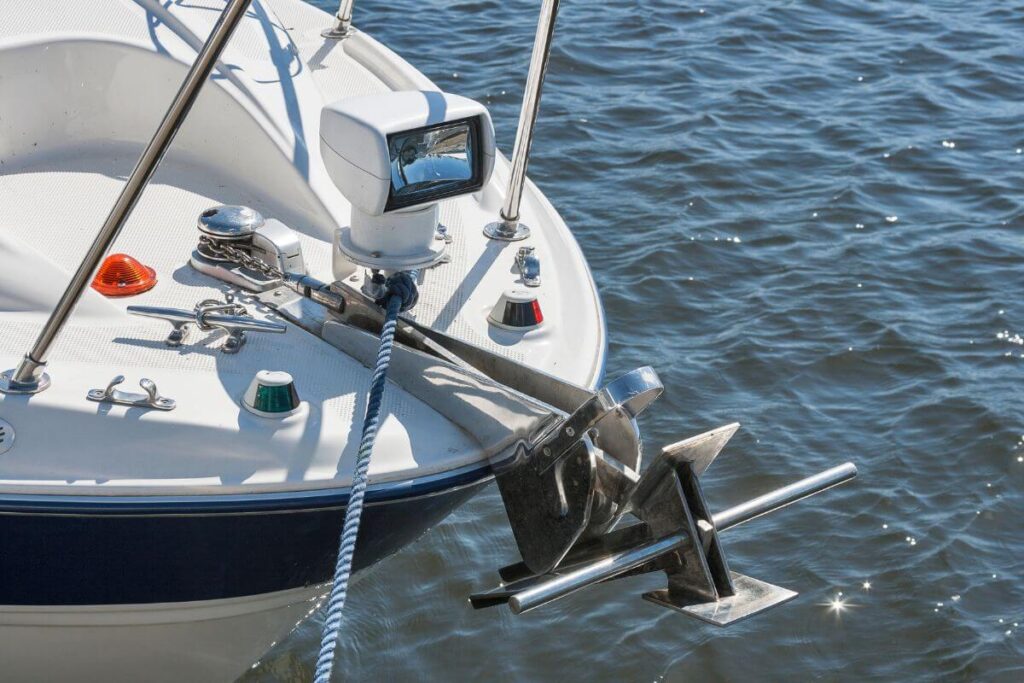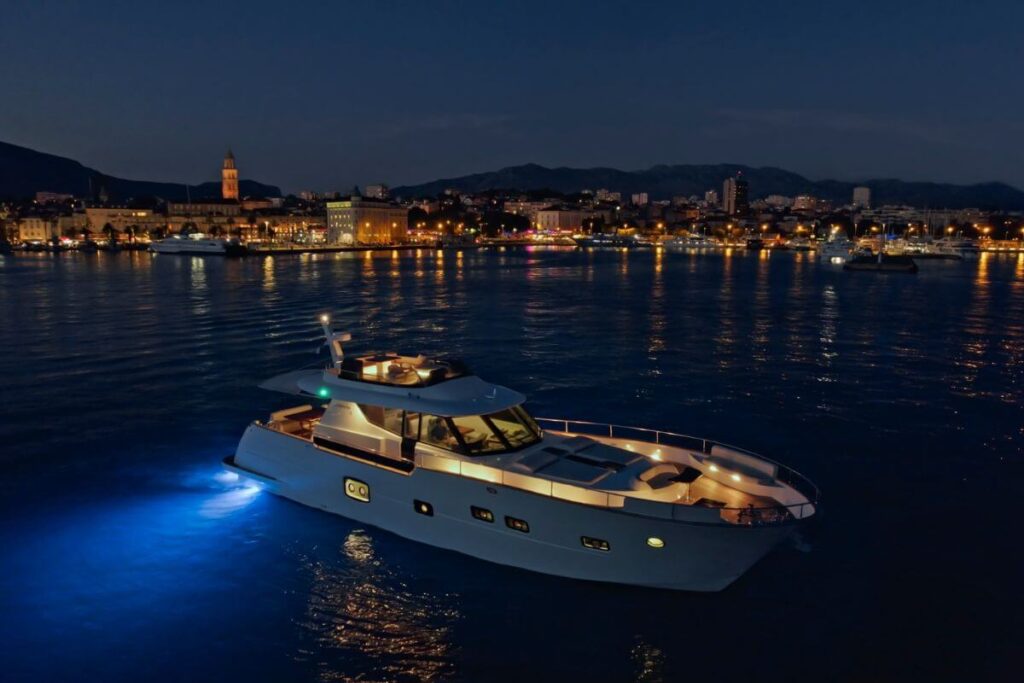Boat navigation light rules are essential for preventing collisions at night or in poor visibility conditions. These regulations dictate the color, position, and timing of lights displayed by boats.
Navigation lights serve two main purposes on a boat. They are the definite way to make your boat visible when you operate it at night or in low visibility weather to prevent collusion. The other thing is when two boats approximate each other, the navigation light indicates who has in the right way. However, these lights will only come in handy when you make the best use of them with navigation light rules. In this post, we’ve covered the basic rules for navigation lights.
Navigating waterways safely after dark requires a clear understanding of maritime lighting norms. Established by international and local maritime organizations, these rules mandate that vessels exhibit specific lights to indicate their size, type, and activity to other boaters—assuring clarity on the waters when visibility wanes.
Green lights denote the right side, red lights signal the left side, and white lights reveal a vessel’s presence and direction. Sailboats under power and all motorized boats must follow these guidelines to communicate their intentions and maintain safety at sea. Adherence to these protocols helps to prevent accidents and is a fundamental component of responsible boating. By mastering these rules, boaters contribute to a safer nautical environment for everyone navigating the waters.
Boat Navigation Light Rules – Key Takeaways
- Colored lights are always denoted as sidelight, Red light on the Port, and Green on the starboard. Red and green sidelights both shine from dead ahead to 112.5° aft (towards the stern) on each side.
- Stern lights are white and shine towards the stern (aft) and 67.5° forward on both sides. (Therefore, the stern light combined with the sidelight creates a full (360°) circle of light.
- All-round lights are white and shine constantly over the horizon by creating an arc of 360°.
- Masthead lights are white and installed over the fore and aft centreline on a vessel. This provides an unbroken light over an arc of the horizon of 225° forward, which signifies 112.5° on the port side through just ahead to 112.5° on the starboard side.
- Sailboats under power are recognized powerboats.
- During the day sailboats with sails up, but are also under power, are required to fly a black “steaming cone,” with its point downward, wherever it can be viewed. When a sailboat is under power it must follow the rules as like a powerboat.
Types Of Boat Navigation Lights

Navigating the waters safely means understanding the language of marine lighting. Just as traffic lights regulate the flow of cars, boat navigation lights help sailors avoid collisions and travel securely after dark. We’ll explore the essential lights that every seafarer needs to recognize.
Port (red) Navigation Lights
The left side of a vessel, referred to as the ‘port’ side, is designated by a red navigation light. This luminary serves as a positional marker, allowing other boaters to ascertain which direction a vessel is facing in relation to their own when meeting head-on or crossing paths.
- Visible from a distance, typically up to one nautical mile for smaller boats and two nautical miles for larger vessels.
- Should remain illuminated from sunset to sunrise and during periods of restricted visibility.
Starboard (green) Navigation Lights
On the opposite side, the ‘starboard’ side is indicated through a green navigation light. Its purpose mirrors that of the port light—to inform nearby boats which side they are seeing to prevent accidents.
- Similar in range to the red port light, starboard lights also span up to two nautical miles for larger vessels.
- Must be in operation from dusk until dawn and at times when visibility is poor.
Stern (white) Navigation Lights
Completing the critical trio of navigation lights is the stern light, a white light placed at the back of the boat. This light ensures that vessels are visible from behind and can safely be overtaken or crossed.
- Shines over a prescribed arc and is clearly visible over two nautical miles.
- Crucial during night hours and in low-visibility conditions, this light is a non-negotiable aspect of navigation safety.
Familiarity with these navigation light regulations is vital for all boaters to maintain safety and comply with international maritime laws. By following these guidelines, mariners can signal their intentions and position effectively, ensuring safer seas for everyone.
Rules And Regulations
Understanding the rules and regulations for boat navigation lights is crucial for ensuring the safety and compliance of maritime travel. Both international waters and inland waterways have distinct sets of regulations that sailors must adhere to. Navigation lights help in the prevention of collisions by alerting other vessels of your position, orientation, and status. This section provides a detailed overview of the regulations that govern boat navigation lighting.
International Rules
The International Regulations for Preventing Collisions at Sea (COLREGs) dictate the use of navigation lights for vessels on international waters. According to these rules:
- Power-driven vessels require a masthead light, sidelights, and a stern light.
- Sailing vessels under power must use the lighting configuration of power-driven vessels. When solely under sail, they should display sidelights and a stern light.
- Vessels at anchor display an all-round white light visible from all directions.
- Vessels under 7 meters may have reduced requirements in certain conditions.
All vessels must adhere to the specific color, range, and arc requirements for each light, ensuring visibility by other boats.
Inland Rules
For boats navigating in rivers, lakes, and other inland waterways, the United States Coast Guard (USCG) sets out their own rules which are:
- Different configurations for navigation lights are based on the type and size of the vessel.
- Rules for specific waterway types and conditions, including peri-urban waterways with increased traffic.
- Mandatory compliance with local and federal regulations which could involve additional lighting or signals.
The Inland Navigation Rules act in unison with COLREGs but have localized adjustments for the increased complexity of shallow and narrow channels.
Additional Considerations

Beyond the standard regulations, there are additional considerations to keep in mind:
| Vessel Condition | Lighting Requirement |
|---|---|
| Restricted in ability to maneuver | All-round lights to indicate status |
| Engaged in fishing | Specific lights that signal other boats to keep clear |
| Towing operation | Additional lights to indicate towing length and breadth |
Proper interpretation and application of navigation light regulations are essential. Skippers should ensure their vessels comply with the latest regulations and be prepared to recognize the light configurations of other vessels to maintain safety on the water.
Frequently Asked Questions For Boat Navigation Light Rules
What Are The Requirements For Navigation Lights On A Vessel?
Vessel navigation light requirements vary by size and type. All boats must display red (port) and green (starboard) sidelights. Power-driven vessels over 12 meters need a masthead light, sternlight, and all-around white light. Sailing vessels under 7 meters may use a lantern or flashlight in low visibility.
What Lights Are Required For Boats At Night?
At night, boats must display red and green sidelights and a white stern light. Boats under sail also need a red-over-green masthead light. All vessels are required to exhibit an all-round white light when at anchor.
What Are The Rules For Nautical Lights?
Nautical lights are governed by specific rules to ensure safety and communication at sea. Vessels must display lights that indicate their size, type, and activity. Red and green sidelights denote port and starboard, while white stern and masthead lights show direction and visibility to other ships.
Compliance with the International Regulations for Preventing Collisions at Sea (COLREGs) is mandatory.
What Navigation Lights Are Required For Boats Under 23 Feet?
Boats under 23 feet need red and green sidelights and an all-round white light or a masthead light and sternlight visible from two miles away. Use sidelights in conjunction with the masthead and sternlight or the all-round white light.
Conclusion
Navigating the waters safely is essential for any boater. Understanding and following the boat navigation light rules is a key part of this. Ensuring your vessel is visible at night and during poor visibility conditions protects you and others at sea.
Navigation lights are the way to describe your position and movement in the water. By installing these lights and knowing the rules you can ensure the safety of your vessel and everyone else.



